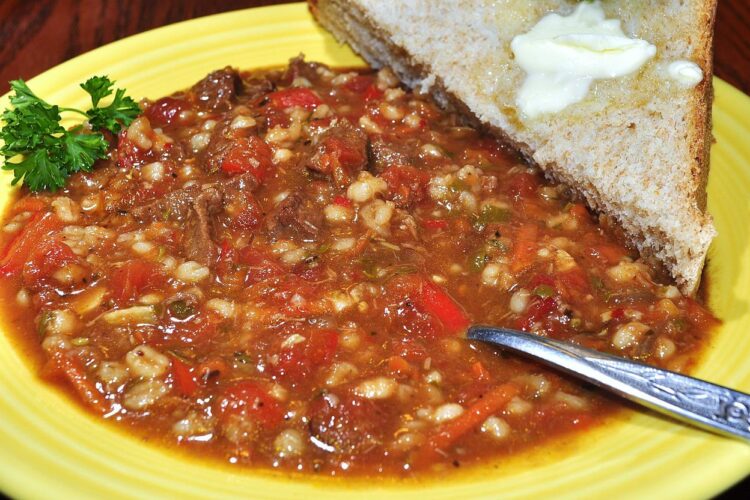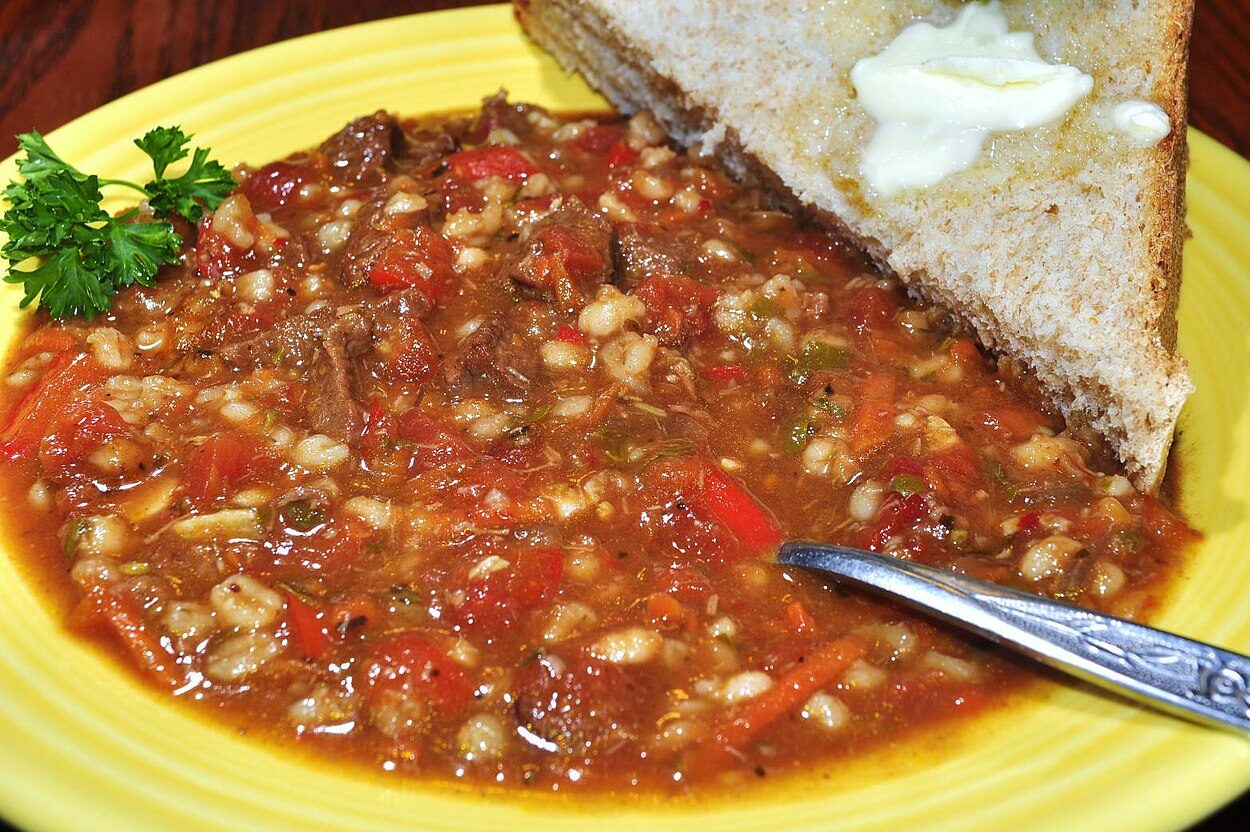Introduction to Beef Barley Soup
Beef Barley Soup is an easy, hearty meal perfect for cozy dinners, loaded with vegetables, tender beef, and plump barley. This dish brings comfort and nutrition in one bowl, and the rich flavors make it a favorite for the whole family. Not only is this homemade beef barley soup flavorful, but it’s also simple to prepare, making it a perfect weeknight meal. Plus, it freezes well, so you can make a big batch and enjoy leftovers anytime!
The main ingredients in this soup include wholesome vegetables, lean beef, and barley, a nutrient-dense grain that adds a delightful chewiness to every bite. The combination of savory beef broth, fresh herbs, and hearty grains makes this soup incredibly filling, and it’s the kind of recipe that warms you up on a cold day.
The Benefits of Barley in Soup
Barley is a whole grain that resembles the texture of brown rice, with a slightly nutty flavor. It’s rich in fiber, vitamins, and minerals, making it a great addition to your diet. It absorbs the broth’s flavors, becoming tender as it cooks, and adds depth to the soup. The most commonly used type in this recipe is pearl barley, which has been partially refined for faster cooking. Barley also helps thicken the soup naturally, giving it a rich and hearty consistency.
Choosing the Right Beef
The beef in this recipe can be tailored to your preferences. The best options for this soup are either flank steak, cubed chuck roast, or even leftover cooked beef. If you want a quicker option, ground beef works well too—just be sure to brown the beef with the onions to develop flavor. Once browned, the fat should be drained to keep the soup lean and nutritious. If you use leftover roast beef or steak, it will add an extra layer of depth to the soup as it cooks with the other ingredients.
Key Ingredients
Here’s a breakdown of the essential ingredients for Beef Barley Soup:
- Onion & Garlic: These two aromatics are the base of the soup and provide a strong flavor foundation.
- Carrots & Celery: These vegetables are staples in classic soups, adding texture, color, and sweetness.
- Cooked Beef: Whether you use leftover roast beef or fresh beef, it should be tender and flavorful. If you don’t have cooked beef, you can quickly cook beef cubes in the soup pot.
- Beef Broth: A rich broth is key for a hearty soup. You can use store-bought or homemade beef broth, but choose a reduced-sodium option to control the saltiness.
- Diced Tomatoes: Adding canned diced tomatoes with their juices enhances the soup’s acidity and sweetness, balancing the savory flavors of the beef and barley.
- Barley: Pearl barley is the best choice for this recipe due to its quick cooking time and smooth texture.
- Worcestershire Sauce: This sauce adds umami and richness to the soup.
- Herbs & Spices: Dried thyme, bay leaf, and fresh parsley provide an aromatic boost. These herbs complement the beef and vegetables perfectly.
- Beef Gravy Mix: This is an optional addition, but it thickens the soup and adds a richer beef flavor.
- Red Wine (Optional): A splash of red wine deepens the flavor, adding complexity to the broth.
- Salt & Pepper: Season to taste as these simple seasonings enhance all the other flavors.
Cooking Tips & Tricks
- Prepping the Beef: If you’re using fresh beef, cook it in the pot with the onions to brown it before adding the broth. This step helps to build layers of flavor, as the beef sears and caramelizes, adding richness to the final dish. If using ground beef, brown it until fully cooked and drain excess fat to avoid greasy soup.
- Choosing Your Barley: Pearl barley is recommended as it cooks relatively quickly compared to whole barley. If you’re using whole barley, adjust the cooking time, as it may take longer for the grain to soften.
- Adjusting Consistency: If your soup becomes too thick after cooling or when reheating leftovers, add more beef broth or water to reach your desired consistency. Barley tends to absorb liquid as it sits, which thickens the soup over time.
- Freezing and Reheating: Beef Barley Soup freezes exceptionally well. Simply portion it into airtight containers and freeze for up to 3 months. To reheat, thaw it in the refrigerator overnight and then warm it up on the stovetop, adding a bit more broth if necessary to thin it out.
- Customizing the Soup: You can easily add other vegetables like mushrooms, potatoes, or peas to make this soup even heartier. The recipe is flexible, allowing you to adjust according to what you have on hand.
- Serving Suggestions: This soup pairs perfectly with crusty bread, biscuits, or a fresh garden salad. If you’re looking for an extra indulgent side, try serving it with cheesy garlic bread or buttery dinner rolls.



